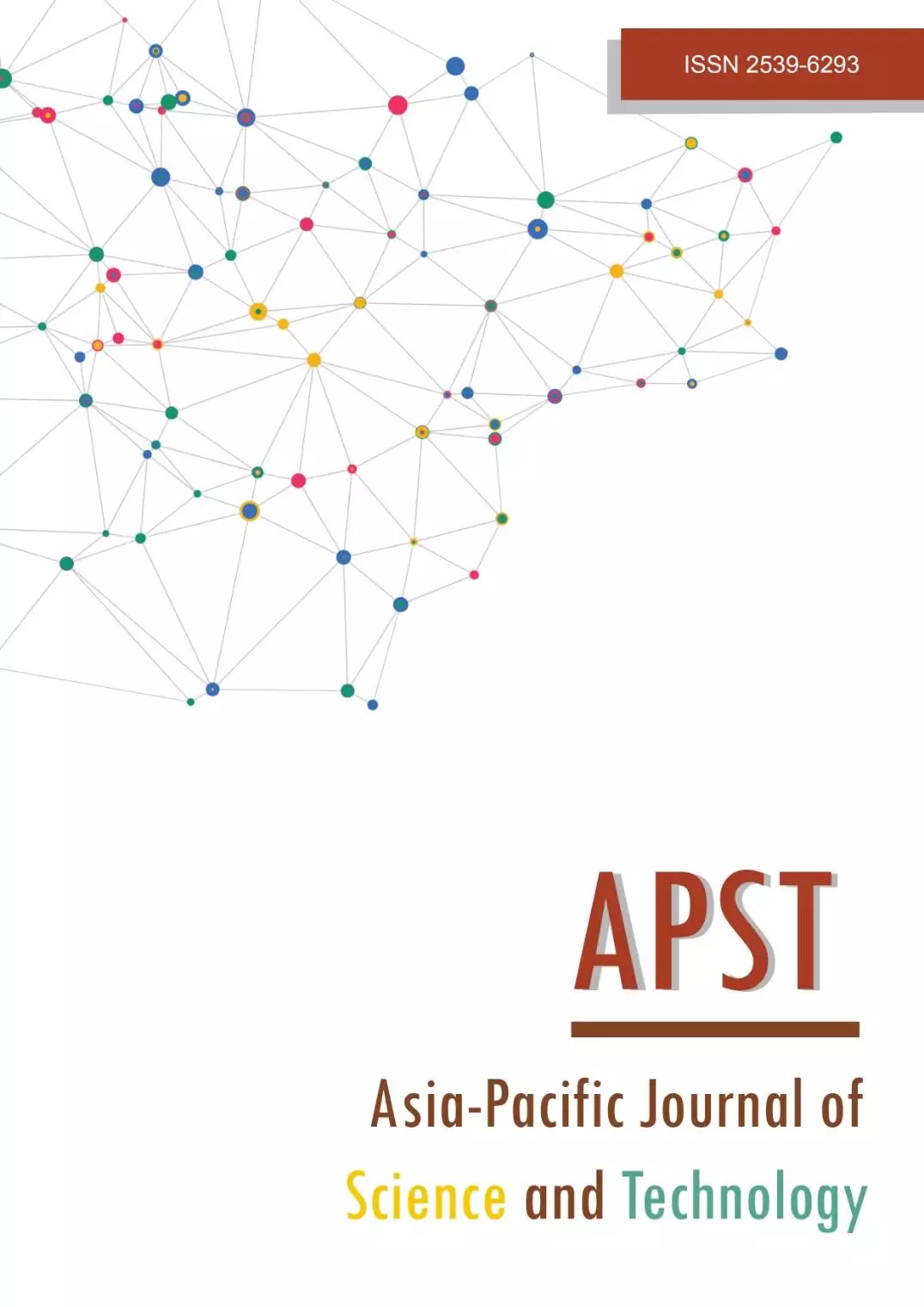Andrographolide production in in vitro cultures of Andrographis paniculata (Burm.f.) Nees
Main Article Content
Abstract
Fah Talai Jone, Andrographis paniculata (Burm.f.) Nees is a Thai medicinal plant that has been used for Covid-19 treatment as alternative medicine. Pharmacologically active diterpene lactones such as andrographolide accumulate in its leaves. This study investigated the combinatorial effects of 1-naphthaleneacetic acid (NAA) at 0, 0.5 and 1.0 mg/L and 6-benzyladenine (6-BA) (at 0, 5, and 10 mg/L) on the development and accumulation of andrographolide in A. paniculata in vitro using Murashige and Skoog, 1962 (MS) semi-solid medium. Results showed that lateral bud cultures had a survival rate of 33 to 73%, with good callus development when cultured on MS medium containing BA 10 mg/L and MS added with BA 10 mg/L and NAA 1.0 mg/L. Seeds germinated in vitro had a 100% survival rate and developed into mature plants with leaves and roots of 5-10 cm after 30 days of cultivation. Plantlets grown in vitro contained andrographolide at 1.14 % of dry weight, while plants grown in soil for 120 days had andrographolide content at 1.5% dry weight. However, andrographolide was not detected in the callus of treatments that contained BA, NAA alone or in combination. The in vitro plantlets had leaves and roots with lengths of 5-10 cm within the 30-day culture period and accumulated andrographolide at 1.14% dry weight.
Article Details

This work is licensed under a Creative Commons Attribution-NonCommercial-NoDerivatives 4.0 International License.
References
Hossain MS, Urbi Z, Sule A, Rahman KMH. Andrographis paniculata (Burm. f.) wall. ex Nees: A review of ethnobotany, phytochemistry, and pharmacology. Sci World J. 2014;2014:274905.
Faculty of Medicine Ramathibodi Hospital Mahidol University. Bioactivity of Andrographis paniculata (Burm. f.) wall. ex Nees [internet]. 2020 [cited 2020 Jun 19]. Available from: https://www.rama.mahidol.ac.th/altern_med/th/km/19jun2020-1729.
Sa-ngiamsuntorn K, Suksatu A, Pewkliang Y, Thongsri P, Kanjanasirirat P, Manopwisedjaroen S, et al. Anti-SARS-CoV-2 activity of Andrographis paniculata extract and its major component andrographolide in human lung epithelial cells and cytotoxicity evaluation in major organ cell representatives. J Nat Prod. 2021;84(4):1261-1270.
Das D, Bandyopadhyay M. Novel approaches towards over-production of andrographolide in in vitro seedling cultures of Andrographis paniculata. S Afr J Bot. 2020;128:77-86.
Sharmila R, Subburathinam KM, Sugumar P. Effect of growth regulators on andrographolide production in callus cultures of Andrographis paniculata. Advanced BioTech. 2013;12(9):17-19.
Kadapatti SS, Murthy HN. Micropropagation of Andrographis producta through axillary and adventitious shoot regeneration. J Genet Eng Biotechnol. 2022;20(1):152.
Kaewpiboon C, Boonnak N. Effect of plant growth regulators on diterpene lactone production in callus culture of Andrographis paniculata. TSTJ. 2019;28(10):1795-1801.
Prathanturarug S, Schaffner W, Berger Büter K, editors. In vitro propagation of the Thai medicinal plant Andrographis paniculata Nees: Impact of different cytokinins. Proceedings of the third Asia-Pacific conference on agricultural biotechnology: Issues and choices, poster session, National Science and Technology Development Agency, Bangkok (Thailand) 2005; National Center for Genetic Engineering and Biotechnology. Bangkok (Thailand).
Purkayastha J, Sugla T, Paul A, Solleti S, Sahoo L. Rapid in vitro multiplication and plant regeneration from nodal explants of Andrographis paniculata: A valuable medicinal plant. In Vitro Cell. Dev. Biol. - Plant. 2008;44(5):442-447.
Sharma M, Sharma A, Tyagi S. Quantitative HPLC analysis of Andrographolide in Andrographis paniculata at two different stages of life cycle of plant. Acta Chim Pharm Indica. 2012;2(1):1-7.
Dandin VS, Murthy HN. Regeneration of Andrographis paniculata Nees: Analysis of genetic fidelity and andrographolide content in micropropagated plants. Afr J Biotechnol. 2012;11(61):12464-12471.
Scarpa GM, Prota V, Schianchi N, Manunta F. In Vitro Cultures for the production of secondary metabolites. Secondary Metabolites. Rijeka: IntechOpen; 2022.
Zaheer M, Giri CC. Enhanced diterpene lactone (andrographolide) production from elicited adventitious root cultures of Andrographis paniculata. Res. Chem. Intermediat. 2017;43(4):2433-2444.
Srivastava N, Akhila A. Biosynthesis of andrographolide in Andrographis paniculata. Phytochemistry. 2010;71(11-12):1298-1304.
Tajidin NE, Shaari K, Maulidiani M, Salleh NS, Ketaren BR, Mohamad M. Metabolite profiling of Andrographis paniculata (Burm. f.) Nees. young and mature leaves at different harvest ages using 1H NMR-based metabolomics approach. Sci Rep. 2019;9(1):16766.
Jamil SZMR, Rohani ER, Baharum SN, Noor NM. Metabolite profiles of callus and cell suspension cultures of mangosteen. 3 Biotech. 2018;8(8):322.


